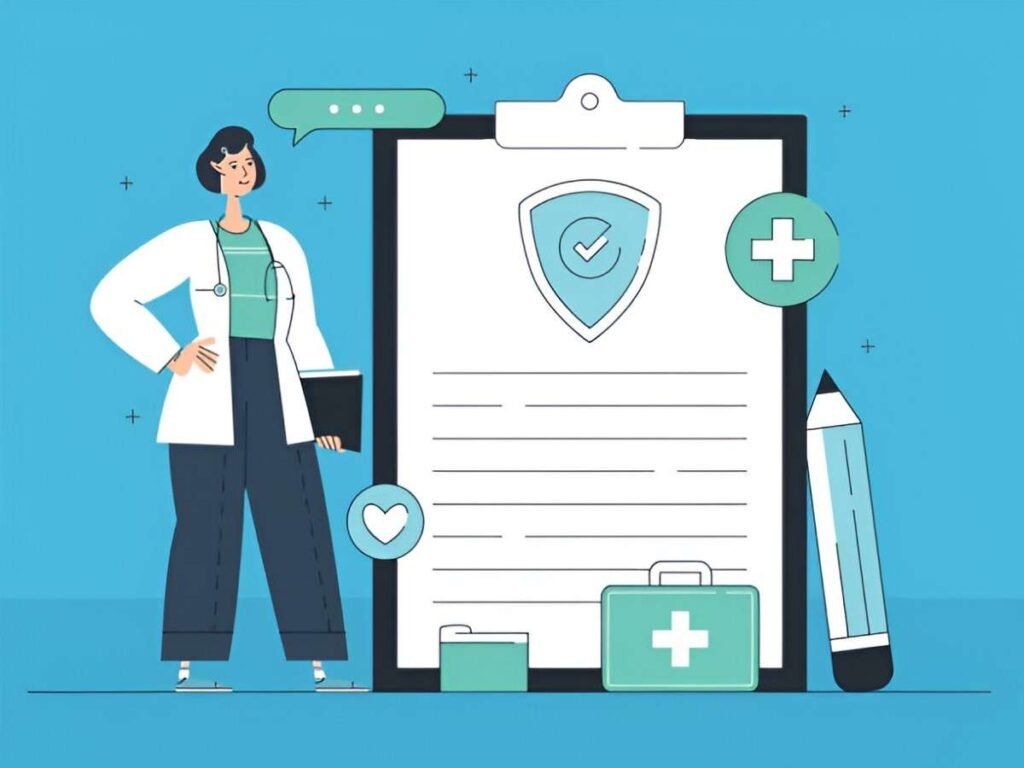Health insurance can often feel like an overwhelming and expensive necessity, especially in the United States, where healthcare costs continue to rise. I’ve often found myself wondering how I can strike a balance between securing the coverage I need and avoiding crippling monthly premiums. If you’re reading this, I bet you’re in the same boat. You want affordable options that don’t leave you vulnerable in case of an emergency or major health issue.
I’m going to break down the process of finding cheap health insurance and help you explore the various options available. I’ll explain in detail how to understand the nuances of different plans, how to calculate your needs, and what factors impact the cost of health insurance. You’ll get a clearer understanding of the ways to reduce costs while maintaining sufficient coverage.
Table of Contents
Understanding Health Insurance Costs
The price of health insurance varies depending on several factors, such as age, location, income, and the level of coverage you require. Health insurance premiums are the amount you pay monthly to your insurance provider, and the more coverage you need, the higher the premium tends to be. However, there are also other costs, including deductibles, copayments, and coinsurance, which can impact your overall expenses.
To get the cheapest health insurance, you have to look beyond the premiums. A low premium might seem attractive, but it could be coupled with high deductibles or out-of-pocket costs that make the insurance unaffordable in the long run. I’ve learned that assessing all aspects of a health insurance plan is critical before making a decision.
Types of Health Insurance Plans
There are several types of health insurance plans in the US, each with varying degrees of coverage and costs. These include:
- Health Maintenance Organizations (HMOs): These plans often have lower premiums but require you to use a network of doctors and specialists. You need a referral from your primary care physician (PCP) to see a specialist. If you’re willing to follow the rules of an HMO, they can offer a low-cost option.
- Preferred Provider Organizations (PPOs): PPO plans allow you to see any doctor or specialist without a referral, which provides more flexibility. However, PPOs tend to have higher premiums compared to HMOs.
- Exclusive Provider Organizations (EPOs): EPOs are similar to PPOs, but you can only see specialists within the network unless it’s an emergency. These plans may offer a balance between premiums and coverage.
- Point of Service (POS): POS plans are a mix of HMO and PPO options. You can see any doctor, but you’ll need a referral for specialists, and out-of-network care will cost more.
- High Deductible Health Plans (HDHPs): These plans have lower premiums but higher deductibles. They are often paired with Health Savings Accounts (HSAs) to help you save on healthcare costs.
I’ve personally found that looking for plans that fall within the HMO or EPO categories tends to be cheaper, especially if you are okay with using a specific network of providers.
Evaluating Health Insurance Plans
When searching for a cheap health insurance plan, it’s crucial to understand the terms of each option thoroughly. The goal is to find a plan that balances both premiums and coverage in a way that fits your financial situation. Here’s a quick breakdown of the main components of a health insurance plan:
- Premium: This is the amount you pay each month for the insurance. It’s the first number to consider, but it’s not the whole story.
- Deductible: This is the amount you pay out-of-pocket before your insurance kicks in. Generally, the higher the deductible, the lower the premium, but the more you have to pay upfront for care.
- Copayment/Coinsurance: This is the amount you pay after you’ve met your deductible. Copayments are a fixed fee (e.g., $30 for a doctor’s visit), while coinsurance is a percentage (e.g., 20%) of the total cost.
- Out-of-Pocket Maximum: This is the maximum amount you will pay in a year. Once you reach this limit, the insurance will cover all additional costs.
Comparison Table: Cost Breakdown of Different Health Insurance Plans
| Plan Type | Monthly Premium | Deductible | Copay/Coinsurance | Out-of-Pocket Max | Flexibility |
|---|---|---|---|---|---|
| HMO | $250 | $2,000 | $20 copay | $6,500 | Low (network only) |
| PPO | $400 | $1,500 | 20% coinsurance | $7,000 | High (any provider) |
| EPO | $300 | $2,500 | $30 copay | $6,000 | Medium (network only) |
| HDHP (with HSA) | $150 | $4,000 | 10% coinsurance | $7,500 | Low (any provider) |
The Role of Government Subsidies and the ACA
The Affordable Care Act (ACA) has made health insurance more accessible for people with low to moderate incomes through subsidies. These subsidies are designed to reduce premiums and make coverage more affordable. If your income is between 100% and 400% of the federal poverty level, you may qualify for subsidies, which could significantly lower your monthly premium.
For example, in 2025, the federal poverty level for a single person is about $14,580. If your income is between $14,580 and $58,320, you may qualify for a subsidy. I’ve found that using the Health Insurance Marketplace (HealthCare.gov) can provide a clear estimate of the subsidies you may be eligible for.
How to Calculate Your Health Insurance Needs
Before settling on a plan, it’s helpful to estimate your healthcare needs. Consider your typical healthcare expenses, like doctor’s visits, prescriptions, and possible medical emergencies. I’ve used the following formula to calculate my expected yearly healthcare costs:
Total Annual Healthcare Costs = Premiums + (Out-of-Pocket Costs – Deductible) + Expected Medical Expenses
Here’s an example calculation for an individual using a PPO plan:
- Monthly premium: $400
- Yearly premium: 12 * $400 = $4,800
- Deductible: $1,500
- Out-of-pocket expenses: $500
- Expected medical expenses: $200 (for minor procedures or visits)
Total Annual Healthcare Costs = $4,800 + ($500) + $200 = $5,500
In this case, the total cost for the year would be $5,500, which might be reasonable depending on your health and financial situation.
Strategies to Save on Health Insurance
- Shop Around: Don’t settle for the first plan you find. Use the Health Insurance Marketplace to compare multiple plans. If you have employer-sponsored insurance, check if they offer multiple options with different premiums and coverage levels.
- Opt for a Higher Deductible: If you’re in good health and don’t expect to need much medical care, consider a plan with a higher deductible. This will lower your monthly premiums.
- Use Preventive Care: Many health insurance plans cover preventive services, like vaccines and screenings, at no additional cost. I’ve found that making use of these services can help prevent more costly health issues in the future.
- Consider a Catastrophic Plan: If you’re under 30 or have a hardship or affordability exemption, a catastrophic health insurance plan can provide emergency coverage at a lower premium.
Is Cheap Health Insurance Worth It?
While it’s tempting to go for the cheapest option, it’s important to consider whether the coverage will truly meet your needs. A very low premium plan might leave you with significant out-of-pocket costs or limited access to healthcare providers. I’ve learned the hard way that the least expensive plan isn’t always the best deal in the long run.
Ultimately, cheap health insurance can be a good choice if you’re healthy and don’t anticipate needing significant medical care. However, if you have ongoing health conditions or need more frequent medical attention, it might be worth paying a little more each month for a plan with better coverage.
Conclusion
Finding affordable health insurance is more than just picking the cheapest plan. It’s about balancing premiums, deductibles, out-of-pocket expenses, and coverage to ensure you don’t end up paying more than you need to. By evaluating your healthcare needs and using available tools like government subsidies, you can find a plan that fits your budget without compromising on the care you need.
I hope this article helps you navigate the world of health insurance and make more informed decisions about your coverage. I’ve found that doing the research and understanding how each element of a plan works is key to making the best choice for both my health and my finances.





